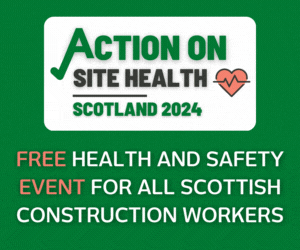Alasdair Steele: Pandemic underlines the enduring investment appeal of resilient retail parks

Alasdair Steele
Alasdair Steele, head of Scotland commercial at Knight Frank, discusses the investment appeal of retail parks in the UK.
About a year ago, at the height of the first lockdown, few people might have predicted that the humble retail park would be among the ‘winners’ – for lack of a better expression – of the pandemic. But, 12 months on, some commentators have described a ‘renaissance’ in what was once considered a dated offering.
Data from the Office for National Statistics shows retail parks were busy throughout the second lockdown and saw footfall increase by more than one-third, 35.3%, as non-essential shops re-opened in England during April – taking the figure to within 2% of 2019. The number of shoppers visiting them may even have been ahead of pre-Covid-19 levels in recent weeks, according to Springboard figures.
There are a range of factors behind the resilience of retail parks during the pandemic. Among them, and perhaps most importantly in our current context, is the fact they can offer shoppers easy access by car and more space to move around – no small advantage when people may understandably be nervous about returning to crowded areas, such as city centres or shopping malls.
Another differentiator has been the typical occupier mix. Whereas three years ago retail parks suffered on the back of the collapse of some anchor tenants – such as Toys R Us – during the pandemic many of the businesses that are a common feature of them were designated ‘essential’ by the government.
Shifting consumer habits also look set to contribute beyond lockdown. The growth of e-commerce – which seems likely to at least be sustained as the economy opens – should continue to support footfall at retail parks as more consumers use online services, with corresponding click-and-collect locations often accommodated at retail parks.
What’s more, the likes of B&Q, Dunelm, and Next – all with a significant retail park footprint – have weathered the last year and, for the latter business in particular, emerged stronger on the other side. There are also expansion plans in the works for occupiers such as B&M and Greggs, which in its results earlier this year reported its stores with drive-through facilities had been among the best performing.
Given all of that, perhaps it should be no surprise that there has been increased appetite from investors for retail park assets. In Scotland we have seen a notable number of deals concluded since the pandemic began, including the sale of units at Renfrew Road Retail Park in Paisley, Urban Logistics REIT’s purchase of a retail warehouse let to The Range in Edinburgh, and many others traded on an off-market basis.
Their attractiveness as an asset class might be best encapsulated in rent collection levels. At a time when it has been a contentious topic – particularly in the retail sector – collection rates have been up to an average of 75% for retail parks, which is no mean feat in the current climate. In fact, for its December 2020 quarter collection day, LondonMetric reported it had received 95% of rent from its retail park assets.
A robust source of income from a new generation of, broadly speaking, well-operated companies aside, the leases on retail parks also share some appealing traits. They tend to be agreed on a long-term basis to good covenants, with rental growth locked in through index-linked review clauses and the buildings themselves are often cheaper to maintain than other property types.
The yields on offer also tend to be attractive – although, they have hardened over the last six months as more investors have realised the attractiveness of the sector. There could even be more to come in this regard, especially if debt terms improve.
That said, there is a need to differentiate within the sector. Not all retail parks are made equal and investor focus should be on assets – or even stand-alone units – that are let at sensible rents to a strong tenant line-up, with a healthy proportion of essential retailers.
As lockdown eases and we return to some kind of normality, one might be inclined to think that there will be a clean break from the last 12 months. But, as they have shown in the past, the durability of retail parks looks set to make them a keen source of investment activity for some time yet.





















